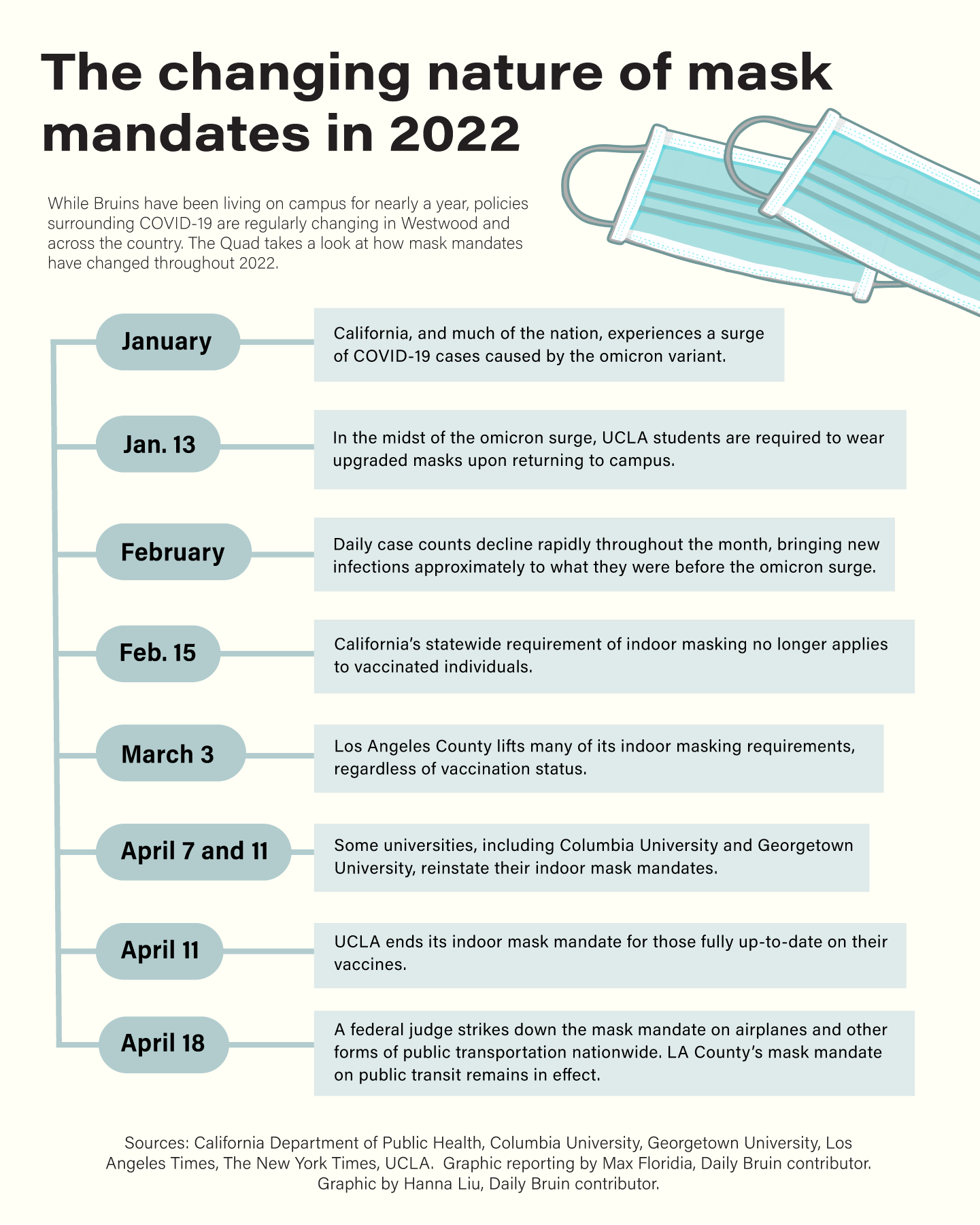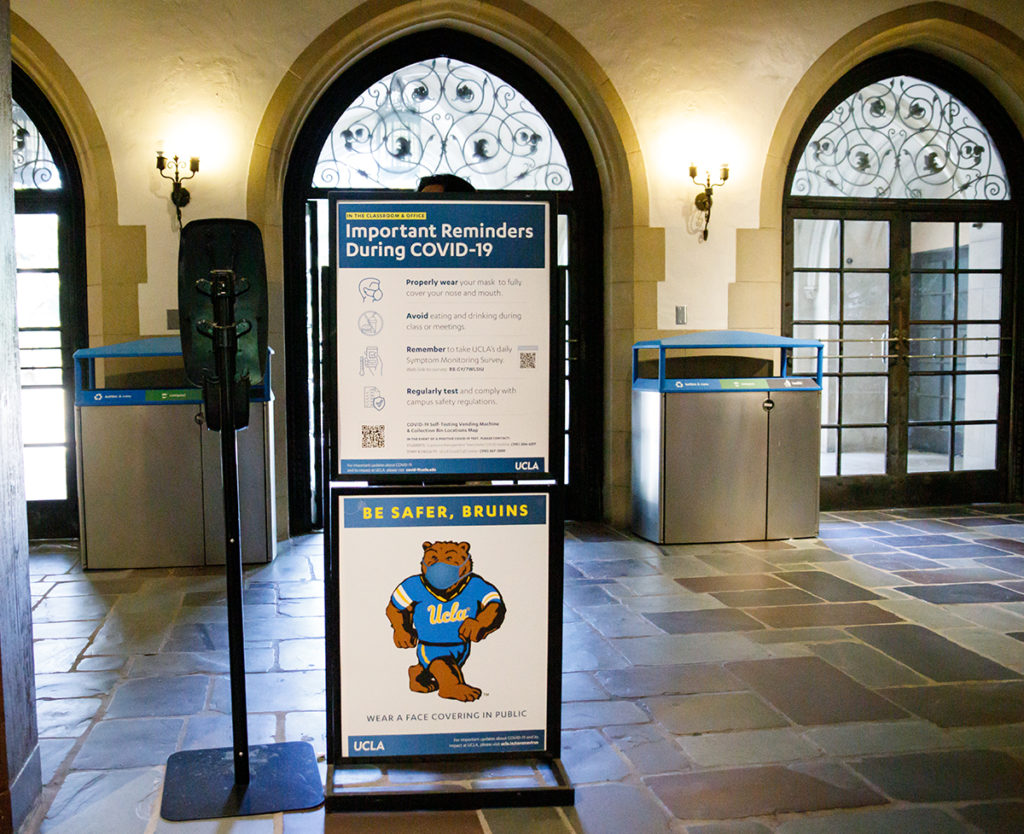The Quad: Changing mask regulations continue to impact UCLA community

By Max Floridia
April 25, 2022 8:47 p.m.
This post was updated April 27 at 10:36 p.m.
Masks – potent symbols of the pandemic that has gripped the world for more than two years – are slowly coming off at UCLA.
As of April 11, students who abide by the university’s vaccination policy are no longer required to wear masks in most indoor settings, such as classrooms, libraries and recreation facilities, which all previously required masking.
Despite new masking policies, it is still highly recommended for students to wear masks inside, according to the university’s COVID-19 policy. Students must also continue to complete the Daily Symptom Monitoring Survey before coming to campus and are required to test weekly with PCR tests through the university until the end of April.
Additionally, Director of Media Relations Bill Kisliuk said in an emailed statement that wastewater testing in UCLA undergraduate housing facilities will remain in effect at least for the remainder of spring quarter.
Some Bruins said they see the advantages of the end of the indoor masking requirement.
Kathryn Wylie, a second-year political science student, said most of the people in her residence hall have not been wearing masks to social events and other off-campus activities, so lifting the university’s indoor requirement felt like the next logical step.
“Even though it (the mask mandate) had not officially been lifted yet, a lot of students were already acting like it was,” Wylie said.
Wylie added that students who use UCLA’s gyms also seem to find exercising easier without the mask requirement.
“They (my friends) weren’t able to work out as long or as hard as they would … just because when they were on the treadmill or working out, they weren’t able to breathe as freely, I guess. So, for gymgoers, I guess this is a good thing,” Wylie said.
Breeze Velazquez, a fourth-year Chicana and Chicano studies and public affairs student and president of the Undergraduate Students Association Council, said she believes it was not a good idea to lift the mask mandate.
“I know a lot of students who are very upset over it, especially, you know, students that are immunocompromised that might need their mask,” Velazquez said.
The lifting of UCLA’s mask mandate comes as the pandemic enters a new phase; although daily case levels are far from those of the omicron variant surge at the beginning of the year, the 14-day average daily case count is up 51% nationally, according to The New York Times.
Los Angeles County Health Officer Dr. Muntu Davis said there is a current uptick in LA County COVID-19 cases driven in part by the BA.2 omicron subvariant. Despite the increase in cases, Davis added that hospitalizations and deaths are stable, so rigorous masking similar to what was done during the earlier stages of the pandemic is not yet needed.
While LA County lifted many of its indoor masking requirements in March, Davis said at UCLA, the strong recommendation of indoor masking should be taken seriously.
“I still think that that strong recommendation should be adhered to by those even if they are up to date because really, we don’t want continued infections and want to reduce that so that we don’t get a new strain of the variant that really does cause more problems than what we’re seeing right now,” Davis said.

Velazquez said the mask mandate was lifted too hastily by UCLA, especially for immunocompromised students.
“I think it (lifting the mandate) shows that the university doesn’t care for them,” Velazquez said. “I think that the indoor masking should have been required, at least through the end of the academic year.”
Velazquez, along with the Disabled Student Union, Mother Organizations coalition and other members of USAC, launched a 16-day protest in Murphy Hall during winter quarter in an effort to secure learning accommodations for immunocompromised students amid pandemic-related uncertainty.
Davis said people can stay safe by testing before and after being around others, as well as considering avoiding high-risk settings altogether. He added that in the event that individuals do become infected, they can utilize Test to Treat, a government service launched in March that can test and supply medicine for those who test positive.
While the pandemic does not appear to be receding from daily life anytime soon, more and more things – such as the lifting of the indoor mask mandate – are slowly returning to what they were prior to the pandemic.

